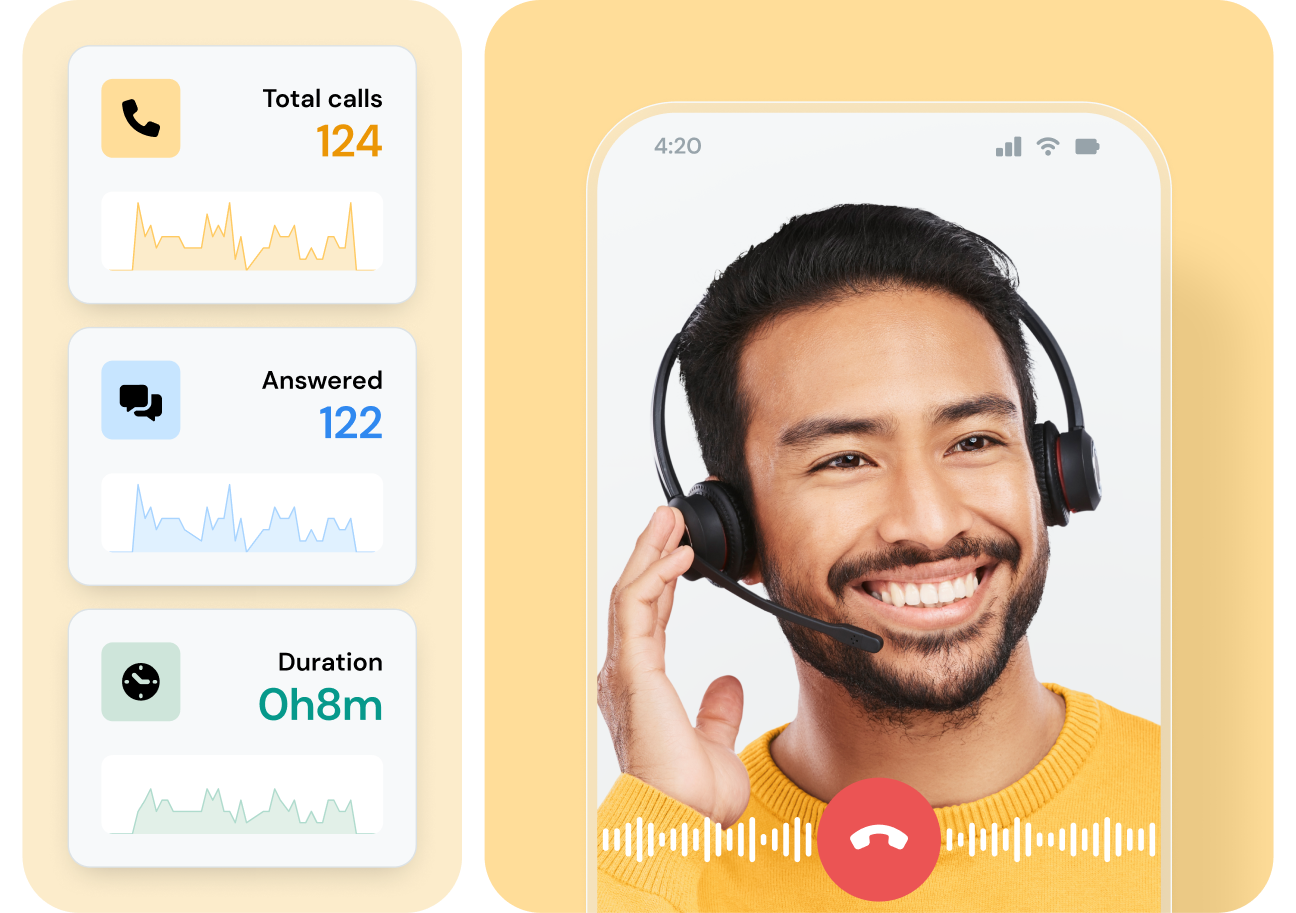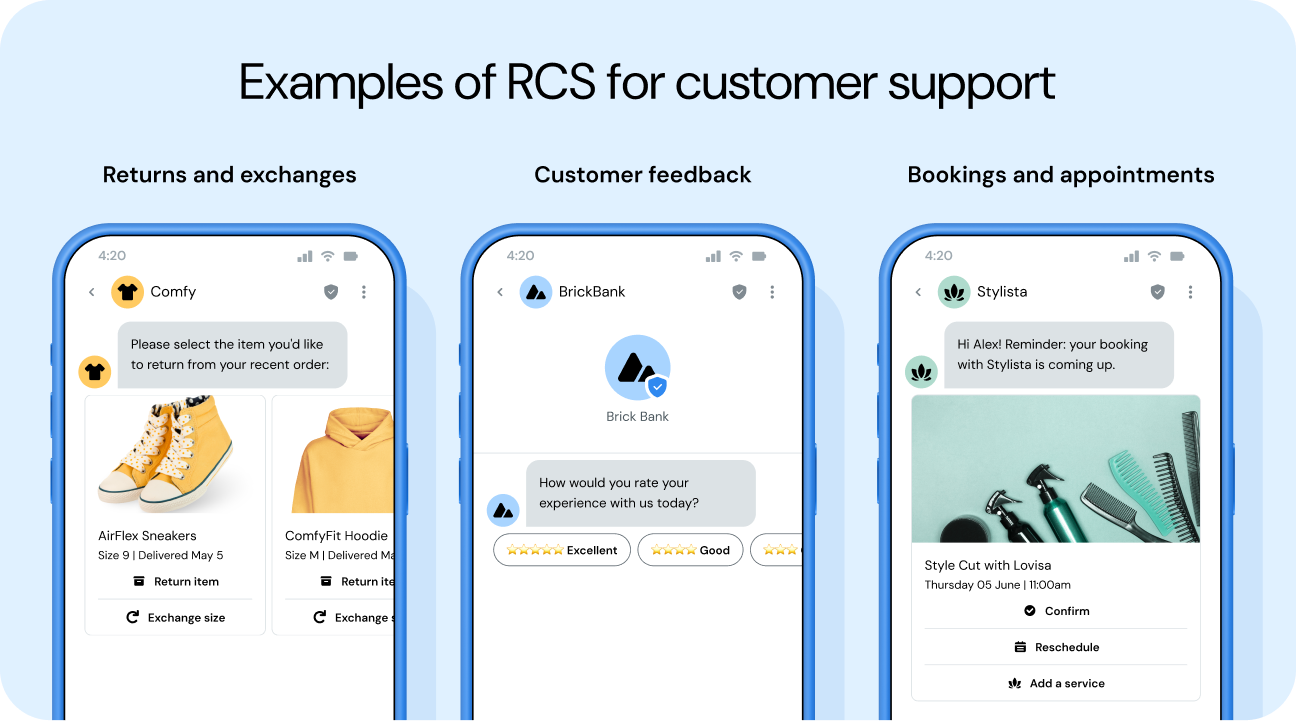Integrated voice support technology
Many consumers want to use voice as their primary channel for support communications. An integrated approach that includes texting, however, can increase happiness.
For example, during peak call times, businesses can offer a custom SMS number that people can use to text a number where they want to be called back once an agent is available. That means no waiting on hold.
With the advanced technology of Elastic SIP Trunking, integrating SMS with voice support becomes simple. In addition to providing a seamless experience on both channels, it also helps free up agents and reduces customer frustration.
And that’s not the only way, voice support can become more efficient while improving the customer experience. When designed intentionally, programmable voice API features like interactive voice response (IVR) help connect customers with the right agent faster. That also means they’ll be asked to repeat and explain their problem less.
You can even connect IVR to a transcription tool so that support calls can be easily analyzed to improve the customer experience.







